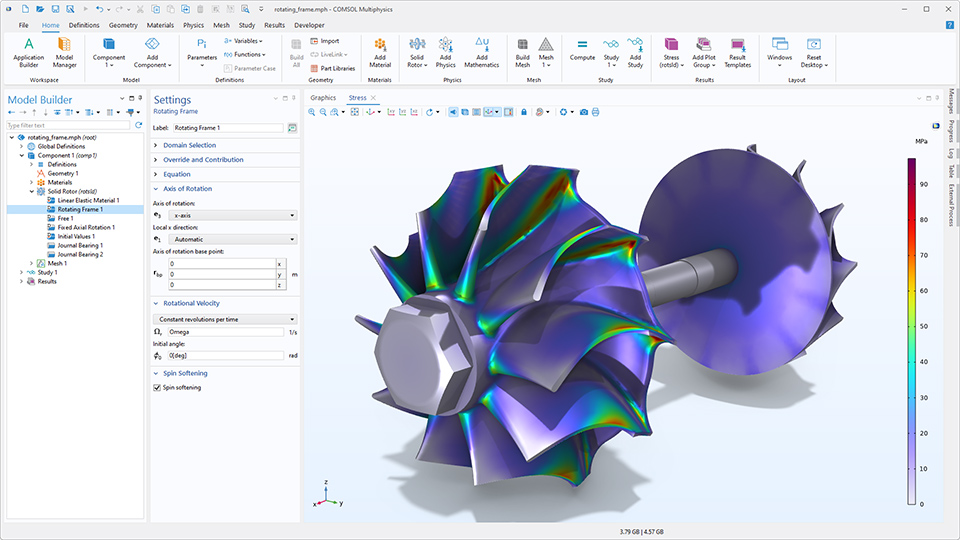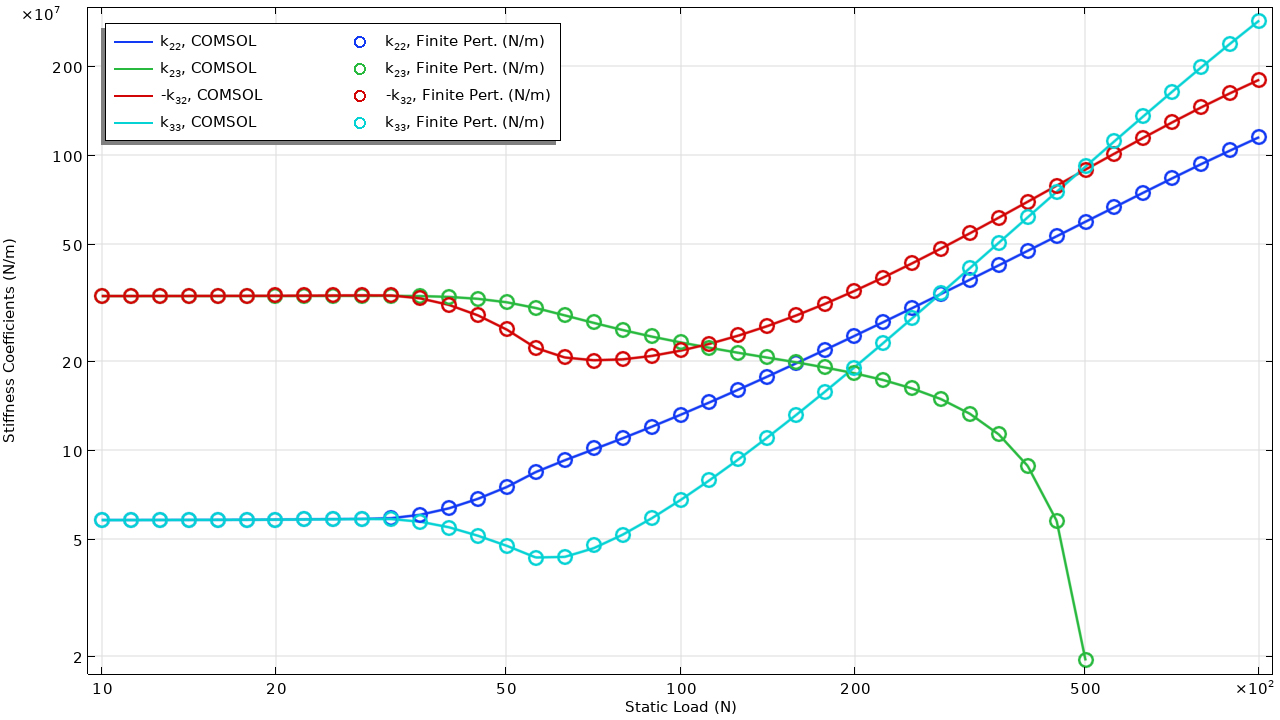Rotordynamics Module Updates
For users of the Rotordynamics Module, COMSOL Multiphysics® version 6.4 introduces a new feature for easily defining rotational properties, expanded functionality for dynamic coefficients, and a new option to track eigenmodes as functions of a parameter. Learn more about these updates below.
Rotating Frame in Solid Rotor Interfaces
When modeling systems with multiple rotors, such as turbines, motors, or crankshafts, the setup and control of rotational parameters is now simpler and more efficient. A new default feature, Rotating Frame, has been introduced in the Solid Rotor and Solid Rotor, Fixed Frame interfaces. In addition to improving performance, this feature consolidates all settings related to rotational properties and provides greater control over defined quantities, such as the axis of rotation and angular velocity. You can see this enhancement in action in the Comparison of Campbell Diagrams Using Different Rotor Interfaces and Rotordynamic Analysis of a Crankshaft tutorial models.

Extended Functionality for Dynamic Coefficients Determination
For more accurate analysis of bearing performance and rotor–bearing interactions, dynamic coefficient calculations are now more robust and versatile. The Hydrodynamic Bearing interface has been enhanced to enable accurate computation of linearized stiffness and damping coefficients under any of the available boundary conditions.

Mode Following for Eigenfrequency Study
For easier interpretation and identification of potential critical speeds in Campbell diagrams, eigenmodes can now be continuously tracked throughout an analysis. This capability is enabled by the new Mode following option available for eigenfrequency study types. The following tutorial models demonstrate this addition:

New Tutorial Model
COMSOL Multiphysics® version 6.4 brings a new tutorial model to the Rotordynamics Module.
Validation of Dynamic Coefficients in Hydrodynamic Bearings

dynamic_coefficients_finite_perturbation
Download from the Application Gallery
